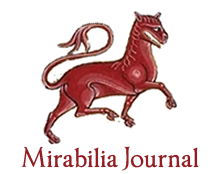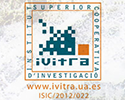John of Damascus and the use of the letters of Paul in his writing An Exact Exposition of the Orthodox Faith
Eirini ARTEMI
Published in Manifestations of the Ancient and Medieval World
Keywords: Adam, Christology, John Damascenes, Moses, Orthodox Faith, Paul’s theology, Son of God.
In this paper, we are going to present how John Damascenes used the Pauline Literature to make the treatise An Exact Exposition of the Orthodox Faith, mainly the part of Christology. John uses the Pauline epistles in order to speak about the Deity. God gives us the ability to know Him through a mirror. John uses more texts from Paul's epistles than texts of other Church fathers. The passages from epistles are the base for the development of John's dogmatic teaching and arguments. So, by this way, we will reach to the conclusions that the main points in the teaching of John's this work are the some of the main points in the theology of St. Paul mainly. The sin of Adam, and each one’s personal sins, all men are sinners and in need of redemption. In order to save mankind, God sent his Son into the world, born of a woman. Christ communicates his grace and justifies all who believe in him, and are baptized. Christ's grace includes the sending of the Holy Spirit, which constitutes the believer as an adopted child of God. Jesus is the fulfilment of all the prophecies of the Old Testament, and has established a New Covenant to replace that of Moses; therefore, Christians are not bound by the ceremonial and dietary laws, and circumcision, contained in the Law of Moses. This insight of Paul made Christianity into a religion open to all people.
Juan Manuel (1282-1348) and ‘Jewish’ Professions in Count Lucanor: A Medieval Iberian Model of Inter-Group Relations
David NAVARRO
Original title: Juan Manuel (1282-1348) and ‘Jewish’ Professions in Count Lucanor: A Medieval Iberian Model of Inter-Group Relations
Published in Medieval and Early Modern Iberian Peninsula Cultural History
Keywords: Convivencia, Count Lucanor, Extended Contact Hypothesis, Jew, Juan Manuel.
This article aims to analyze the personal relationship between Christian writer Juan Manuel (1282-1348) and the Jewish community in his collection of didactic exempla, El Conde Lucanor [Count Lucanor]. Through the theory of out-group interaction, and the mechanisms of re-fencing and extended contact hypothesis, I will examine the relationship of trust and respect reflected between the author and the Jews through the portrayal of some professions attributed to that community by popular folklore, such as money lenders, physicians, alchemists, nigromancers and sorcerers, as shown in the introduction and four exempla of the book. I will analyze several literary techniques employed by the author in regards to these ‘Jewish occupations’ as a resource to minimize the social rejection towards the Jew, and an example of a complex convivencia [cohabitation] that shaped XIV-century Castilian Christian-Jewish relations.
Juridical, Social and Ethical Aspects of Abortion
Leonardo Serafini PENITENTE
Original title: Aspectos Jurídicos, Sociais e Éticos do Aborto
Published in
Keywords: Abortion – Bioethics – Socialism – Health Policy – Catholicism.
The article presents social, juridical and ethical aspects of the voluntary abortion liberation, revealing political agents and possible consequences if abortion becomes legalized.
Katechon and right of resistance: an approach from the Middle Ages
Cecilia DEVIA
Original title: Katechon y derecho de resistencia: una aproximación desde la Edad Media
Published in Medieval and Early Modern Iberian Peninsula Cultural History
Keywords: Galicia, Katechon, Late Middle Ages, Right of resistance, Violence.
The figure katechon is a complex and ambiguous character, based on a biblical quote taken from the Second Epistle of Paul to the Thessalonians. Expresses the power to “slow” or “holds” the coming of the Antichrist and therefore the confrontation between the forces of good and evil, which precedes the return of the Messiah and the end of the world. In this paper we build on the analysis undertaken on the concept by different contemporary thinkers. If the figure of katechon be applied in relation to the uprisings in medieval and early modern radical character as those inspired by millenarian movements, one could consider that the daily resistance of the dominated, mostly passive features, would act as a brake for the arrival of the end of the world, necessary for the advent of a new one.
Knowledge according to sufi thought
Naser Mohamed HRAGA
Original title: El saber según en el pensamiento sufí
Published in
Keywords: Farīd al-Dīn al-‘Aṭṭār, Ibn ‘Arabī, Philosophy, Sufí knowledge, al-Ġazālī.
In this work we study knowledge in Sufism. It is the importance of knowledge, analyzing ideas such as the nature of this truth and the degrees of Sufi knowledge. Sufi knowledge is a difficult subject to explain, among other reasons because this theory is a personal experience, and because knowledge allows you to contemplate all the mysterious truths about the divine to the Sufi. The texts of al-Ġazālī, Ibn ‘Arabī, and the mystic poet Farīd al-Dīn al-‘Aṭṭār are provided.
La quale fu cantata molto bene – The performances of Alessandro Striggios’ monumental 40-part compositions in Munich 1567/68
Bernhard RAINER
Published in Music in Antiquity, Middle Ages & Renaissance
Keywords: 16th c. instrumentation, 40-part compositions, Alessandro Striggio, Cantorey, Ecce beatam lucem, Missa sopra Ecco si beato giorno, Transposition.
In the 1560s Alessandro Striggio composed monumental works such as his Missa sopra Ecco si beato giorno à 40 and a 40-voice motet, both of which can be proven to have been performed in Munich in 1567 and 1568. Analysis of the performing forces of Munich’s Cantorey of this time concludes not only that the instrumental participation of these performances must have been significant, but also that the works were transposed downward. Furthermore, a hypothesis is proposed that the Munich performance of an untitled 40-voice motet in 1568 involved Striggio’s Ecce beatam lucem à 40, which itself may constitute a contrafactum of Ecco si beato giorno, a madrigal that circulated in copies during the decade.
Law 12.871/13 – Medical Education in Brazil. Is the Medical School Ready?
Rosana ALVES, Filomena Eurídice Carvalho de ALENCAR, Cláudia Vasconcellos MIDIÃO, Gleison VALLE, Paulo Victor Ferreira MAI
Original title: Lei nº 12.871/13 – da Formação Médica no Brasil. A Escola Médica Está Preparada?
Published in
Keywords: Brazilian Association for Medical Education, Medical Education, Regional Council of Medicine.
Report from the I Regional Forum of Medical Education CRM-ES and ABEM RJ/ES, Vitória, June 19, 2015, including administrators, teachers, students and medical education authorities.
Letting the wolf in: the duality of human and animal, inclusion and exclusion and the crossing of these boundaries of the werewolves in Gerald of Wales’ Topographia Hibernica
Julia van ROSMALEN
Original title: Letting the wolf in: the duality of human and animal, inclusion and exclusion and the crossing of these boundaries of the werewolves in Gerald of Wales’ Topographia Hibernica
Published in
Keywords: Boundaries, Depiction of the other, Duality, Eucharist theory, Form and nature, Inclusion and exclusion, Liminality, Monsters and hybrids, Transformation.
This article shows, using a close analysis of the images and text, that despite the initial association with ‘Othering’ and monstrousness, the werewolves from the Topographia Hibernica are not a perfect Other but rather assimilated into the community. They represent a transgression between the boundaries of the human and the animal that renders them porous and allows for movement between the two and an interplay of inclusion and exclusion. The werewolves aren’t hybrids in form or nature, but rather show a discordance between form and nature: They are perfectly animal in appearance and perfectly human in nature. The deliberate parallel with theory of form and nature in the eucharist which plays a central role in both the conclusion of the story, the final image and the authors theological discourse on transformation shows that the final verdict on the wolves is one of sameness rather than otherness.
Life and death of the enjoyment of Beauty in the breasts of the Renaissance (c.1300-1600)
Alexandre Emerick NEVES
Original title: Vida e morte do gozo da Beleza nos seios da Renascença (c.1300-1600)
Published in The World of Tradition
Keywords: Beauty, Erotic gaze, Pudency, Renaissance, Western Christianity.
By considering the breast as a significant fragment of the beauty of the female body, recurrently figured in the arts, I analyse how the convergence between the aesthetic and moral dimensions is associated with the intentions of the gazes and the impetus of the hands, from the approach of bodies to the possession of the breast. The sum of biblical lessons with Greco-Roman thought demonstrates how pudency promotes the enjoyment of beauty, culminating in significant artistic representations, from Late Gothic to Baroque, as a consolidation of the values of Western Christianity.
Living Will´s History: understanding the past and reflecting about the present
DADALTO, Luciana
Original title: História do Testamento Vital: entendendo o passado e refletindo sobre o presente
Published in
Keywords: History, Living Will, Patient autonomy.
This article aims to make a historic effort about the living will, analyzing the emergence and development in the United States and the reception of the institute in Europe and Latin America. It is expected, therefore, to present to the reader an overview of the subject and a critical view of the institute in order to question the implementation of living wills and other patient consent from instruments in Brazil.






















































































